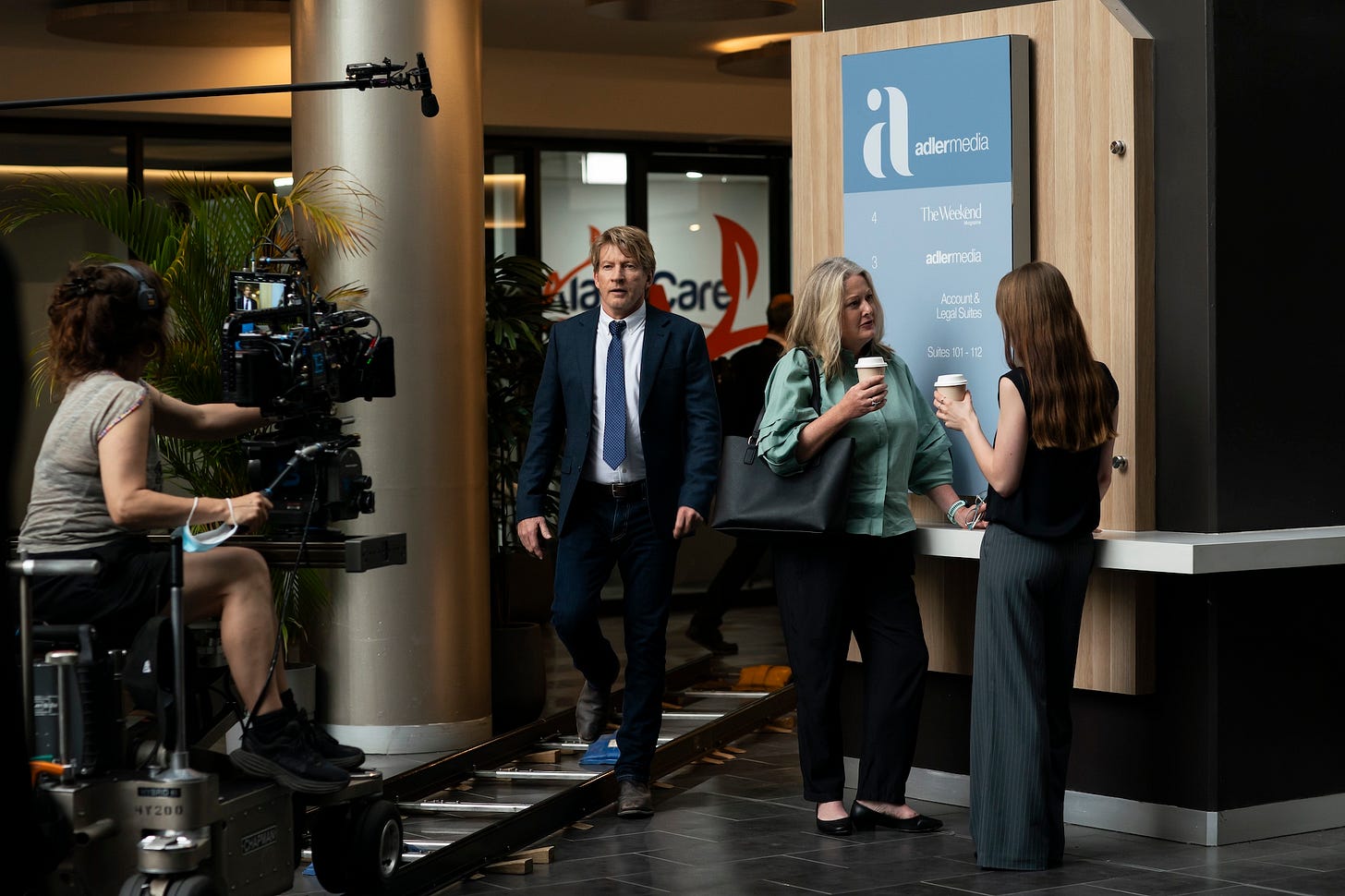Creating other worlds
What I discovered about the architects of film-making magic while watching my book, ‘Fake’, jump from page to screen.
On the set of Fake, Melbourne, 2023: my niece Marni and I as extras (in a scene that met the cutting-room floor) … David Wenham as Joe. (Photograph: Sarah Enticknap.)
About this time last year I was in Melbourne, in a discombobulating, emotional other world, on the set of Fake, observing elements and versions of my life spun in other people’s hands, taki…
Keep reading with a 7-day free trial
Subscribe to Vamp with Stephanie Wood to keep reading this post and get 7 days of free access to the full post archives.



